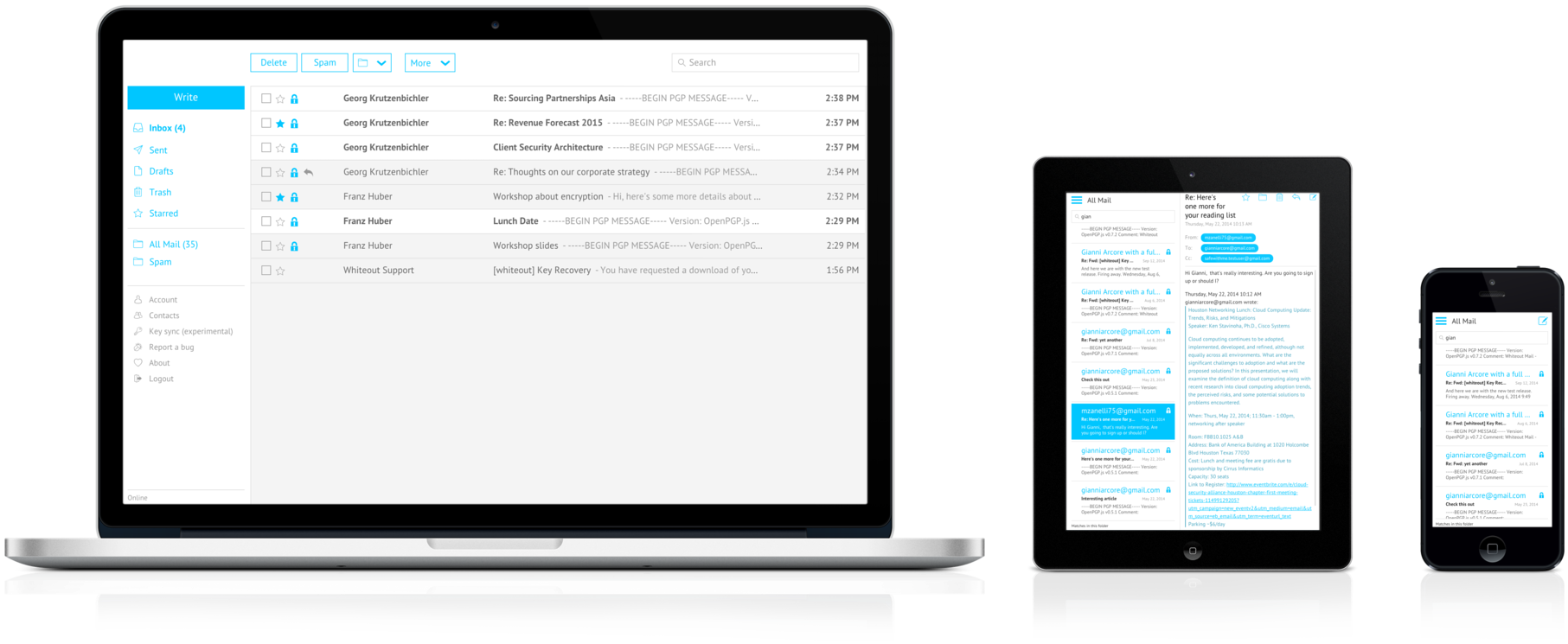hoodiecrow
v1.3.30
Published
Mail App with integrated OpenPGP encryption.
Downloads
55
Readme
Hoodiecrow 
Hoodiecrow is a community supported fork of Whiteout Mail an easy to use email client with integrated OpenPGP encryption written in pure JavaScript. Unlike Whiteout, Hoodiecrow focuses on providing an optimized user experience for Google Mail users via the REST based Gmail api, instead of supporting all standard mail servers via IMAP/SMTP.

Privacy and Security
We take the privacy of your data very seriously. Here are some of the technical details:
The code has undergone a full security audit by Cure53.
Messages are encrypted end-to-end using the OpenPGP standard. This means that only you and the recipient can read your mail. Your messages and private PGP key are stored only on your computer (in IndexedDB).
Users have the option to use encrypted private key sync if they want to use Hoodiecrow on multiple devices.
Content Security Policy (CSP) is enforced to prevent injection attacks.
HTML mails are sanitized with DOMPurify and are rendered in a sandboxed iframe.
Displaying mail images is optional and opt-in by default.
TLS is used to protect your password and message data in transit.
The app is deployed as a signed Chrome Packaged App with auditable static versions in order to prevent problems with host-based security.
The app can also be used as a Progressive Web App from any modern web browser using the new Service Worker apis. Please keep in mind that this mode of operation is not as secure as using the signed packaged app, since users must trust the webserver to deliver the correct code. This mode will still protect user against passive attacks like wiretapping (since PGP and TLS are still applied in the user's browser), but not against active attacks from the webserver. So it's best to decide which threat model applies to you.
Reporting bugs and feature requests
- You can just create an issue on GitHub if you're missing a feature or just want to give us feedback. It would be much appreciated!
Testing
You can download a prebuilt bundle under releases or build your own from source (requires node.js, grunt and sass):
npm install && npm testThis will download all dependencies, run the tests and build the Chrome Packaged App bundle release/hoodiecrow_DEV.zip which can be installed under chrome://extensions in developer mode.
Development
For development you can start a connect dev server:
grunt devThen visit http://localhost:8580/dist/#/account?dev=true for front-end code or http://localhost:8580/test/unit/ to test JavaScript changes. You can also start a watch task so you don't have rebuild everytime you make a change:
grunt watchReleasing Chrome App
grunt release-test --release=0.0.0.x
grunt release-stable --release=0.x.0Deploying Web App & Selfhosting
The App can be used either as a Chrome Packaged App or just by hosting it on your own trusted web server. You can build the app from source.
Build from source
Clone the git repository
git clone https://github.com/tanx/hoodiecrow.gitBuild and generate the dist/ directory:
npm install && gruntRunning the server
To test the server, start it in development mode (without SSL):
node server.js --devNavigate to http://localhost:8889 (or whatever port is set using the PORT environment variable).
To start the server for production use (this automatically redirects to https)
npm startA note on security: The app should not be used without SSL so it's best to set up a reverse proxy or Loadbalancer with your SSL certificates.
To start the server in development mode (no forced HTTPS, iframe loads http content), run node server.js --dev
License
See the LICENSE.txt file.
Third party libraries
We work together with existing open source projects wherever possible and contribute any changes we make back upstream. Many of theses libraries are licensed under an open source license. Here are some of them:
- OpenPGP.js (LGPL license): An implementation of OpenPGP in Javascript
- email.js (MIT license): IMAP, SMTP, MIME-building and MIME-parsing engine
- Forge (BSD license): An implementation of TLS in JavaScript
